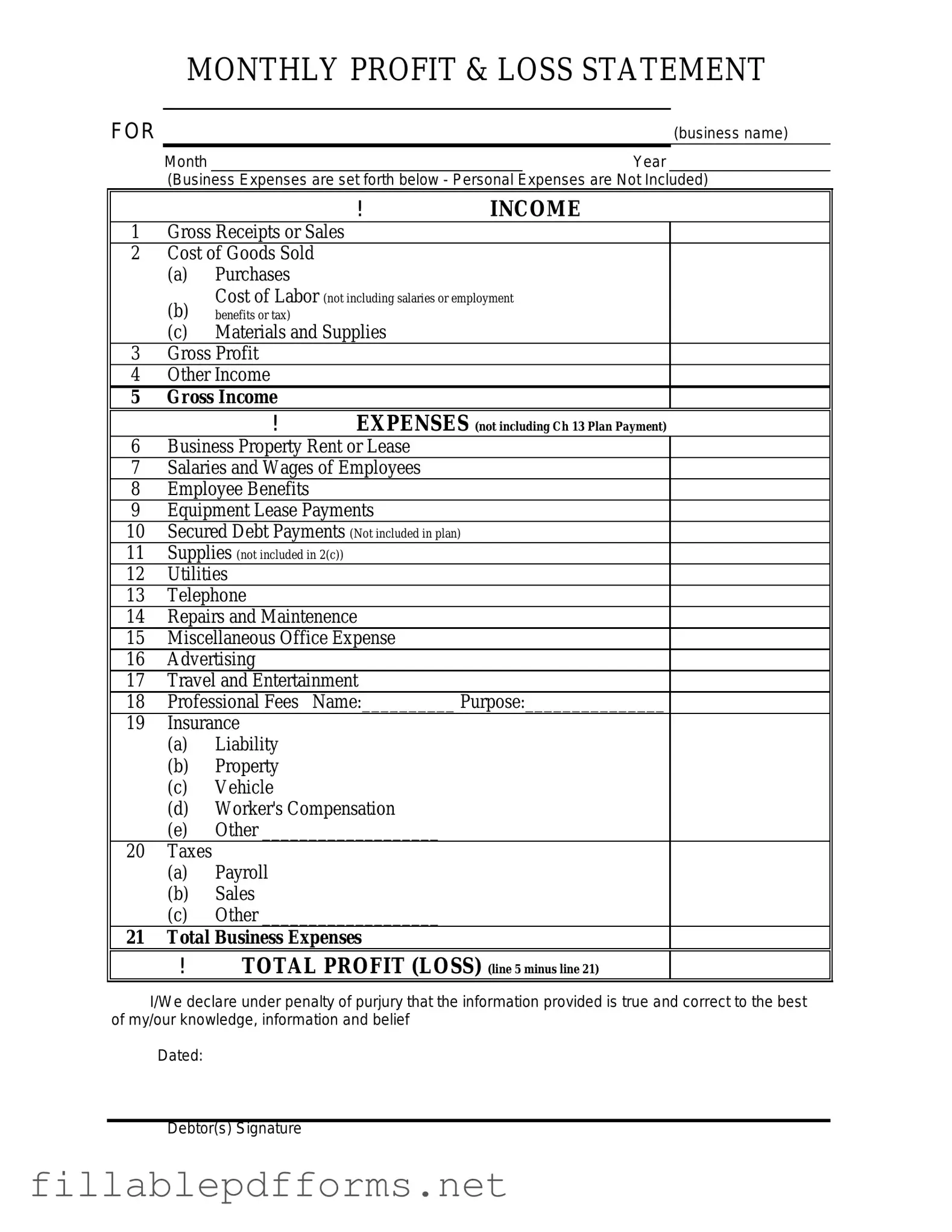Profit And Loss PDF Template
The Profit and Loss form, often referred to as an income statement, is a financial document that summarizes revenues, costs, and expenses incurred during a specific period. This essential tool provides businesses with a clear view of their financial performance, helping them understand profitability and make informed decisions. By analyzing this form, stakeholders can assess operational efficiency and identify areas for improvement.
Launch Editor Here
